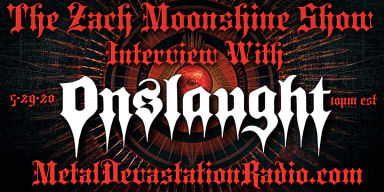
In education, the incorporation of music into curricula has long been recognized for its ability to enhance learning experiences, foster cultural appreciation, and stimulate cognitive development. Among various genres, metal music, often misunderstood and sidelined, has unique potential for enriching multicultural education. This article delves into the significance of metal music as an educational tool, exploring its history, cultural diversity, and the benefits it brings to multicultural learning environments. If you're seeking inspiration to " write my discussion board post " on innovative teaching methods, exploring the role of metal music in multicultural education could offer a compelling perspective.
Understanding Metal Music: Beyond the Stereotypes
The Origins and Evolution of Metal Music
Metal music, characterized by its powerful riffs, complex guitar solos, and thematic depth, emerged in the late 1960s and early 1970s. Bands like Black Sabbath and Led Zeppelin laid the foundation for what would evolve into a diverse and global phenomenon. Over the decades, metal has branched into numerous subgenres, each reflecting unique cultural, geographical, and musical influences, including folk metal, black metal, and power metal.
Debunking the Myths
Contrary to prevalent stereotypes that paint metal music as aggressive or negative, studies and anecdotal evidence suggest that metal can positively impact its listeners. Metal fans often cite the genre's cathartic effect, its ability to articulate complex emotions, and the strong sense of community it fosters among its adherents.
Metal Music as a Multicultural Bridge
Global Diversity in Metal
Metal music transcends geographical boundaries, with vibrant scenes in Scandinavia, Latin America, Asia, and beyond. Each region brings cultural stories, traditions, and musical styles to the genre, creating a rich tapestry of sounds and themes. This diversity makes metal an ideal conduit for multicultural education, offering students a window into various cultures through the universal language of music.
Metal and Cultural Identity
Metal bands often incorporate elements of their national identity, history, and folklore into their music. For instance, Scandinavian metal bands like Wardruna and Heilung draw on Norse mythology and ancient instruments, while bands like Sepultura from Brazil infuse their sound with indigenous rhythms and themes. By examining these cultural expressions, students can gain insights into different societies' identities, histories, and values.
Incorporating Metal Music into Multicultural Education
Curriculum Integration
Integrating metal music into the curriculum can take various forms, from analyzing lyrics for their historical and cultural references to studying the evolution of metal scenes worldwide. Educators can use metal music to spark discussions on topics such as globalization, cultural appropriation, and the impact of history on art.
Fostering Critical Thinking and Empathy
Students can develop critical thinking skills and a deeper understanding of and empathy for different cultures by engaging with metal music's diverse themes and stories. Discussing the context in which certain subgenres arose, such as the socio-political commentary in thrash metal, can also encourage students to think critically about the world around them.
Enhancing Cultural Appreciation and Tolerance
Exploring metal music's global variations encourages students to appreciate cultural differences and recognize the universal aspects of human expression. This can lead to a more tolerant and inclusive attitude, undermining stereotypes and fostering a sense of global citizenship.
Challenges and Considerations
While the potential benefits are significant, educators face challenges integrating metal music into multicultural education. These include overcoming biases against the genre, ensuring content appropriateness, and engaging students who may not be predisposed to metal music. Careful selection of materials and an inclusive approach can help mitigate these challenges.
Case Studies and Success Stories
Educational Programs and Workshops
Several educational programs have successfully integrated metal music into their curricula. For example, workshops exploring the folklore in metal music have been used to teach students about mythology. In contrast, others focus on the sociological aspects of the global metal scene to discuss issues of identity and community.
Academic Research and Conferences
The growing academic interest in metal music, evidenced by conferences and publications dedicated to studying its cultural impact, underscores its relevance to multicultural education. These academic endeavors provide valuable resources and legitimacy to educators looking to incorporate metal into their teaching.
Conclusion
With its global reach and cultural depth, metal music offers a unique and powerful tool for multicultural education. Educators can enrich their students' learning experiences and prepare them for a diverse world by transcending stereotypes and embracing the genre's potential for fostering cultural appreciation. As metal continues to evolve and resonate with fans across the globe, its role in education is poised for growth, promising exciting opportunities for exploration and understanding in multicultural learning environments.
Author Bio
Freelance Writer Nicole Hardy, a distinguished journalist in the realms of education and the arts, is celebrated for her thorough and discerning coverage of performing arts education. Her career, which extends beyond ten years, has solidified her status as an authoritative figure in this domain. Hardy is praised for her thorough analyses and captivating writing manner. She earned her Master's in Journalism from the University of Arts, with a focus on arts and culture journalism.
Reviews - Interviews - Promo - Radio Play
Contact zach@metaldevastationradio.com












